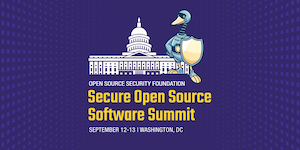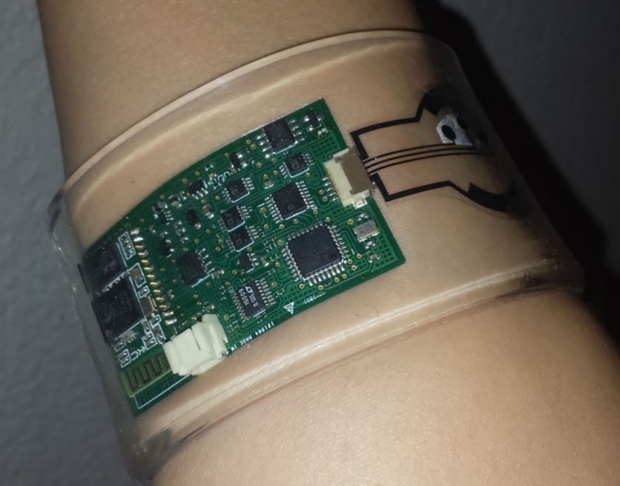US Department of Energy
See the following -
Crony Capitalist Epic Systems Gets Rich by Manipulating Stimulus Timeline
Pejman Yousefzadeh | All Fired Up Media | February 27, 2012
Newspapers and bloggers have spilled a lot of real and digital ink in recent months over the Department of Energy’s controversial stimulus-created loan guarantee program, the now-defunct green tech firm Solyndra, and its wealthy benefactor/Obama campaign bundler George Kaiser. Too few are paying attention to the government’s push for widespread health information technology adoption, funded in large part by the stimulus bill, and key industry players exerting influence over the policy process for personal benefit. If you haven’t yet heard of Wisconsin-based Epic Systems and its CEO Judith Faulkner, pay attention.
- Login to post comments
How Secure Is Our Smart Grid?
Dan Lohrmann | Government Teachnology | February 26, 2017
Over the past several months, alarm bells have been going off regarding potential attacks against the U.S. electrical grid...In the [Department of Energy’s] landmark Quadrennial Energy Review, it warned that a widespread power outage caused by a cyberattack could undermine 'critical defense infrastructure' as well as much of the economy and place at risk the health and safety of millions of citizens. The report comes amid increased concern over cybersecurity risks as U.S. intelligence agencies say Russian hacking was aimed at influencing the 2016 presidential election”...
- Login to post comments
OpenSSF Gathers US Government and Industry Leaders at Secure Open Source Software Summit 2023
Press Release |
Open Source Security Foundation (OpenSSF) |
September 13, 2023
 The Open Source Security Foundation (OpenSSF), a cross-industry initiative of the Linux Foundation that focuses on sustainably securing open source software (OSS), brought together US Government (USG) officials from the National Security Council (NSC), Office of the National Cyber Director (ONCD), and the Cybersecurity and Infrastructure Security Agency (CISA) among others with industry leaders at the Secure Open Source Software (SOSS) Summit 2023. Participants at the Summit discussed the security challenges for the consumption of OSS in critical infrastructure sectors and beyond and highlighted the shared responsibility needed to ensure the resilience of OSS in critical infrastructure.
The Open Source Security Foundation (OpenSSF), a cross-industry initiative of the Linux Foundation that focuses on sustainably securing open source software (OSS), brought together US Government (USG) officials from the National Security Council (NSC), Office of the National Cyber Director (ONCD), and the Cybersecurity and Infrastructure Security Agency (CISA) among others with industry leaders at the Secure Open Source Software (SOSS) Summit 2023. Participants at the Summit discussed the security challenges for the consumption of OSS in critical infrastructure sectors and beyond and highlighted the shared responsibility needed to ensure the resilience of OSS in critical infrastructure.
- Login to post comments
The Thin Line Group
 ThinLine was founded to assist federal, state, and local government agencies, commercial and private sector organizations, with continuity planning, disaster prevention, and disaster response. ThinLine provides consulting services and material solutions that address evolving man-made threats such as cyber warfare and terrorist threats. In addition, the Thin Line also addresses the dynamic environmental conditions that follow catastrophic natural disasters such as failing infrastructure. The Thin Line Group supports individuals and organizations that need realistic and sustainable resilience solutions to protect life, property, information, and functions.
ThinLine was founded to assist federal, state, and local government agencies, commercial and private sector organizations, with continuity planning, disaster prevention, and disaster response. ThinLine provides consulting services and material solutions that address evolving man-made threats such as cyber warfare and terrorist threats. In addition, the Thin Line also addresses the dynamic environmental conditions that follow catastrophic natural disasters such as failing infrastructure. The Thin Line Group supports individuals and organizations that need realistic and sustainable resilience solutions to protect life, property, information, and functions.
- Login to post comments
Visualizing Nanotechnology in 3D with Open Source Software
By Robert Hovden | September 28, 2014
The new open source project tomviz is helping the 3D visualization of nanotechnology...In this user-friendly, cross-platform application, large volumetric datasets can be rendered, animated, sliced, and analyzed. The platform provides a robust graphical interface where multiple datasets, colormaps, and other visualization settings can be used in combination and these objects can be saved as image or animated video files...
- Login to post comments
Wearable Sweat Sensor Can Diagnose Cystic Fibrosis, Study Finds
Press Release |
Stanford University School of Medicine |
April 17, 2017
 A wristband-type wearable sweat sensor could transform diagnostics and drug evaluation for cystic fibrosis, diabetes and other diseases. The sensor collects sweat, measures its molecular constituents and then electronically transmits the results for analysis and diagnostics, according to a study led by researchers at the Stanford University School of Medicine, in collaboration with the University of California-Berkeley. Unlike old-fashioned sweat collectors, the new device does not require patients to sit still for a long time while sweat accumulates in the collectors...
A wristband-type wearable sweat sensor could transform diagnostics and drug evaluation for cystic fibrosis, diabetes and other diseases. The sensor collects sweat, measures its molecular constituents and then electronically transmits the results for analysis and diagnostics, according to a study led by researchers at the Stanford University School of Medicine, in collaboration with the University of California-Berkeley. Unlike old-fashioned sweat collectors, the new device does not require patients to sit still for a long time while sweat accumulates in the collectors...
- Login to post comments